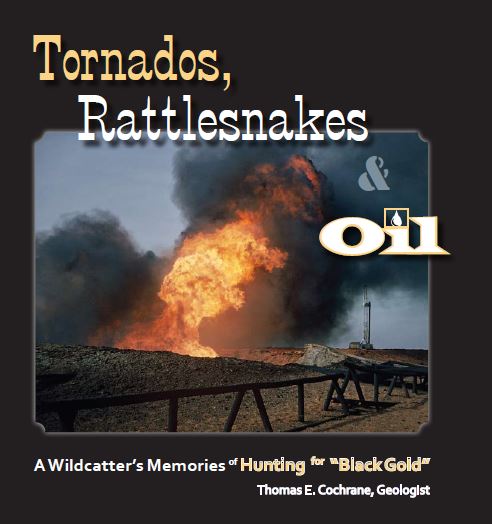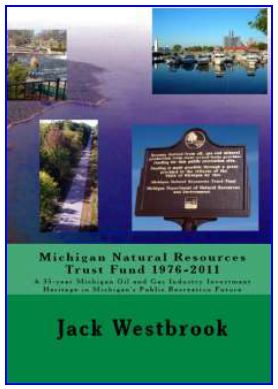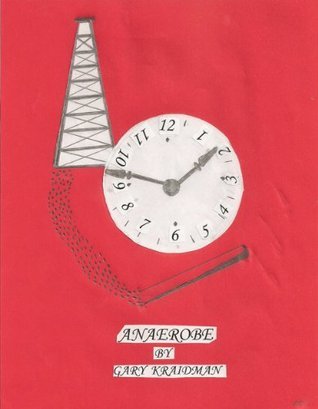A brief look at some history books, personal accounts and biographies from America’s oilfields.
American Oil & Gas Historical Society (AOGHS) website content includes links to just a small sample of petroleum-related history books and some of media resources relating to the history of U.S. energy. Classic historical texts available online include Paul H. Giddens’s 1936 The Birth of the Oil Industry (with introduction by Ida Tarbell).
Because AOGHS also links oil patch artwork featured in Oilfield Artists, many website visitors have asked a post that includes their fiction, research, and personal accounts or biographies.
Supporting AOGHS — Amazon Associates
Any Amazon purchase you make via the green links can benefit the historical society. As an Amazon Associate, AOGHS earns a commission from qualifying purchases from Amazon’s history books and other selections: Education and Teaching Books; Biographies and Memoirs; Engineering and Transportation; and Politics and Social Sciences.
A Wildcatter’s Memories of the Oil Patch
In August 2018, Thomas Cochrane of California published his “wildcatter’s memories,” a fictionalized account of hunting for black gold — searching for oil and natural gas fields.

“A fast-paced and lyrical stroll through several decades of searching for oil and gas, punctuated with stories about the greatest gamblers, and insights into petroleum geology,” noted a review by Robert Blackburn, executive director of the Oklahoma Historical Society about Tornadoes, Rattlesnakes & Oil: A Wildcatter’s Memories of Hunting for Black Gold.
As an Amazon Associate, the American Oil & Gas Historical Society earns a commission from qualifying purchases.
Mathew Day, Texas Oil History Sleuth
Available on Amazon Books, researcher and author Matthew M. Day of Lubbock, Texas, has independently published a series e-books and paperbacks exploring little-known histories of the petroleum, railroad, and agricultural industries. By 2021, his work included How to Read Oil History If You’re an Average Joe: or, E. K. Warren and Son (Three Oaks, Michigan) and Oil in Three Western States and The World’s First Petroleum History Coffee-Table Book: or, The Overlooked Legacy of J. P. Morris of Texas: Petro-Cowman, Silver Mine Investor, and Wildlife Preservationist.
Day specializes in oil and agricultural history, especially in West Texas during the first half of the 20th century. Other of Day’s books have featured Ranches and Rigs: How Three Texas Panhandle Ranches Helped Shape the Oil and Gas Industry’s Formative Years (2020) and Accidental Resurgence?: The Atchison, Topeka, and in 2020, Accidental Resurgence?: The Atchison, Topeka, and Santa Fe Railway in West Texas: How Oil, Raw Materials, and Agriculture (Tried To) Save the Railroad Industry on the South Plains at Midcentury.
About Accidental Resurgence, Day has noted, “Many people might not know that the area to the west of Lubbock, a West Texas city of about a quarter million located not far from the state’s western border with New Mexico, is home to one of the largest and most prolific oil fields in the state, if not the country,” Day proclaimed. “The discovery of oil near Levelland and Morton in the late 1930s opened up new opportunities for the Atchison, Topeka, and Santa Fe Railway (AT&SF).”
Day in 2019 also wrote and published Fueling Victory at Home: How the Mallet Ranch of Texas and Its Relationship With the Oil Industry Helped Reshape the American Southwest in the 1940s. Another of his works, Unknown Quantity: Vincent Charles Perini Jr.’s Role in Oil and Uranium in the American West, 1953-58. is described at his podcast page, which offers a summary of the 2021 book about “the nuclear oilman.”
These and more Matthew Day books can be found on his Amazon authors page.
Drilling Life of Lucien Flournoy of Alice, Texas
The Confederate, a biography of the life and petroleum industry career of Lucien Flournoy (1919-2003), was published in November 2020. According to it author, John W. Flores, the book features Flournoy’s “extraordinary accomplishments centered in Alice, Texas, where he operated Flournoy Drilling Company for more than 50 years — becoming wealthy and a leading citizen of the town about 50 miles west of Corpus Christi.”
Originally from Louisiana, Flournoy studied petroleum engineering at Louisiana State University in Baton Rouge. The future Alice mayor would become a liberal Democratic benefactor, generously donating to Texas A&M University-Kingsville, Texas A&M-Corpus Christi, Driscoll Children’s Hospital, and the Boy Scouts of America, among others.
“In 1946, Flournoy invested about $1,200 in building a drilling rig based on his own designs,” noted The Confederate author John W. Flores. Fifty years later, Flournoy Drilling Company would be sold to a Houston-based company for $50 million. Flournoy’s wife Maxine is also an important part of the story, Flores adds. She was a skilled WASP test pilot during World War II, receiving a Congressional Gold Medal for her service in the Army Air Corps.
Flores first met the Flournoys in 1997 after visiting to write about the businessman’s life for an article in the Alice Echo-New Journal. By May 2001, after Flournoy had hired him to write the biography, the author moved to Texas from Albuquerque, New Mexico. Flores is a journalist and author in the mountains of New Mexico with two books previously published.
The Confederate is available via Amazon books; as an Amazon Associate, the American Oil & Gas historical Society earns a commission from qualifying purchases.
History of Michigan Natural Resources Trust Fund
In 1976, Michigan became the first state in the nation to earmark state revenue generated through mineral, including oil and gas, activity for acquisition and improvement of environmentally sensitive and/or public recreation lands. The Michigan Natural Resources Trust Fund (MNRTF) was created by the Kammer Recreational Land Trust Fund Act, signed by Governor William G. Milliken on July 23, 1976.
Through 2010, the Fund has awarded 1,601 MNRTF project grants either active or closed (completed) in each of Michigan’s 83 counties totaling more than $816.6 million.

Jack R. Westbrook of Mt. Pleasant has covered the Michigan Natural Resources Trust Fund “from embryo to adulthood.”
From the tip of the Keweenaw Peninsula to a harbor park in downtown Detroit, more than 1,600 public recreation facilities from rail trails to parks to fishing piers statewide have benefited from the Michigan Natural Resources Trust Fund, born of a unique alliance of government, environmental groups and the Michigan oil and gas industry in the mid-1970s serving as a solution to a seeming impasse.
Michigan has produced over 1.25 billion barrels of oil and more than seven trillion feet of natural gas since the discovery of the Saginaw Field in August, 1925. This history has been brought to life by retired Michigan Oil & Gas News magazine Managing Editor Jack R. Westbrook, who covered the Michigan Natural Resources Trust Fund “from embryo to adulthood.”
In his Michigan Natural Resources Trust Fund 1976-2011 a 35 year Michigan investment heritage in Michigan’s public recreation future), Westbrook takes the reader on a tour of the places to play in Michigan’s great outdoors made possible by this historic Fund, listing the projects in each county with general, and oil and gas, histories of their county home venues. The 222 page soft-cover book, Michigan Natural Resources Trust Fund 1976-2011, published by Jack R. Westbrook. Contact him at (989) 773-5741.
As an Amazon Associate, the American Oil & Gas Historical Society earns a commission from qualifying purchases.
“Petrol Thriller” Series: Turning Oil into Water
Since the early 2000s, Gary Kraidman, a New Jersey-based mystery writer and supporter of the Somerset County Historical Society has published his “Nick Torno Petrol Thriller” series, including screenplays and short stories. In 2024, he added GAME CHANGER.
Kraidman, a retired microbiologist, published ANAEROBE (a 2012 Nick Torno Petro Thriller). According to the author, his eco-terror microbial thriller features Nick Torno foiling a plot where bad guys plan to turn America’s oil to water with a novel microbe.

The Kraidman ANAEROBE Petrol Thriller is available at Amazon Books and Goodreads, which has described the 253-page edition first published in 2012:
“America’s oil turned to water! Nick Torno, Special Projects Director for the Department of Energy must stop an overseas terror group from contaminating an experimental waste carbon dioxide gas pipeline leading to an deep down oil reserve under the infamous Teapot Dome formation in Wyoming. If the fanatical plotters of eco-terror are successful a novel microbe will enter our underground oil pool and spread rapidly. America’s fossil fuel will cease to exist. The United States of America will remain dependent forever on foreign oil.”
ANAEROBE (A Nick Torno Petro Thriller).
Business History of Modern Oil Industry
Written by a scientist, Fueling America: An Insider’s Journey proclaims: “Fossil fuel was the life blood of the industrial revolution. Initially, coal was king as it fueled steam engines that revolutionized agriculture, manufacturing and the railroads.” Oklahoma geophysicist Jack Kerfoot explains why oil surpassed coal in the 1900s and with development of the internal combustion engine, revolutionized transportation.

After spending over 20 years working in the energy industry overseas, Kerfoot in 2018 published Fueling America, which in 244 pages discusses, “our global energy conundrum of finding reliable, sustainable, reliable energy that won’t harm our environment.”
Originally from Tulsa, Kerfoot received a bachelor of science degree in geophysics from the University of Oklahoma. He spent more than four decades in the energy industry, including working for multi-national companies Mobil and Conoco, and independents like Forest Oil, Apache, and Murphy Oil. He today operates a consulting company, J.L. Kerfoot Energy Services, LLC.
Amazon purchases benefit the American Oil & Gas Historical Society. As an Amazon Associate, AOGHS earns a commission from qualifying purchases.
_______________________________________________
The American Oil & Gas Historical Society preserves U.S. petroleum history. Become an AOGHS annual supporter and help maintain this energy education website and expand historical research. For more information, contact bawells@aoghs.org. © 2024 Bruce A. Wells.


